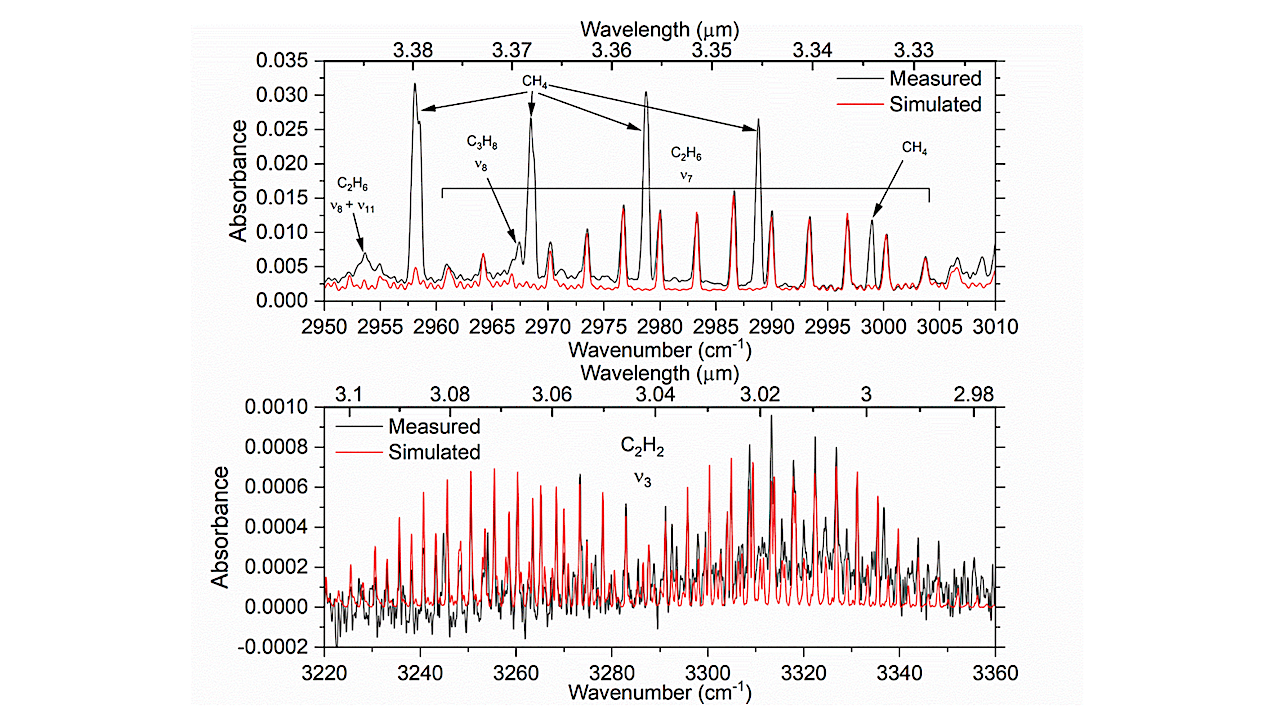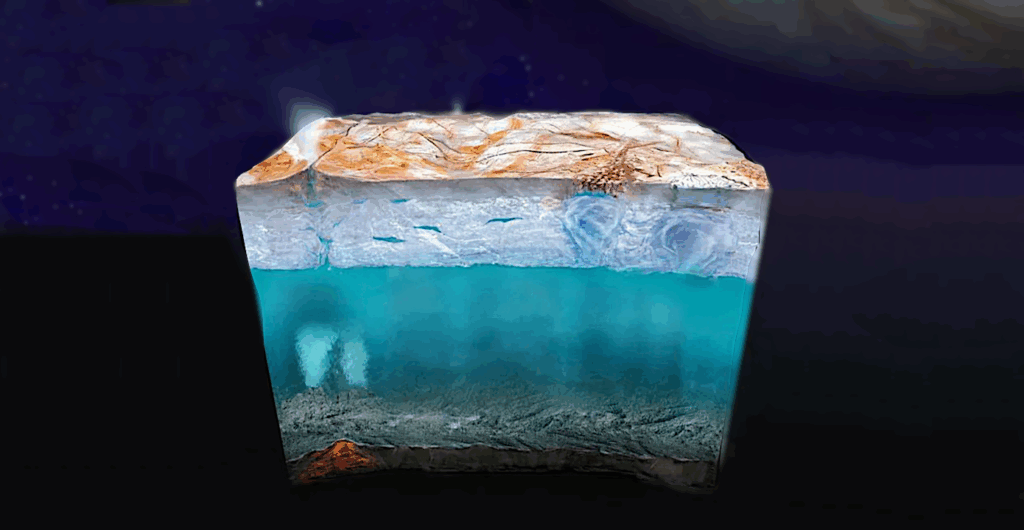Experimental Investigation of the Photochemical Production of Hydrocarbons in Warm Gas Giant Exoplanet Atmospheres

In warm (equilibrium temperature <1000 K) gas giant exoplanet atmospheres, the observation of trace species in abundances deviating from thermochemical equilibrium predictions could be used as an indicator of disequilibrium chemical processes, such as photochemistry.
To predict which compounds could be used as such tracers, it is therefore essential to study how photochemical processes affect their abundances. For this purpose, we investigated experimentally the efficiency of the photochemical formation of hydrocarbons in gas mixtures representative of warm gas giant atmospheres as a function of the gas temperature at millibar pressures.
We find that, compared to thermal reactions alone, photochemistry efficiently promotes, under the studied conditions, the formation of hydrocarbons, with the detection of acetylene, ethane, and propane, as well as carbon monoxide. Therefore, our results confirm the importance of photochemistry in exoplanet atmospheres as a disequilibrium process. Ethane is the major hydrocarbon formed in our experiments, in apparent contradiction with the prediction by thermophotochemical models that acetylene should be the main hydrocarbon product.
We also observe an evolution of the hydrocarbon production efficiency as a function of the temperature, a behavior not reproduced by a 0D thermophotochemical model. Additional studies are necessary to definitively understand the origin of the differences between the experimental and modeling results and to infer the importance of our results for understanding hydrocarbon formation in warm gas giant exoplanet atmospheres.
Finally, our work demonstrates the importance of experimental studies together with modeling studies to accurately interpret, understand, and predict observations of exoplanet atmospheres.
Benjamin Fleury, Yves Benilan, Olivia Venot, Bryana L. Henderson, Mark Swain, Murthy S. Gudipati
Comments: 37 pages, 4 tables, 13 figures
Subjects: Earth and Planetary Astrophysics (astro-ph.EP)
Cite as: arXiv:2310.11164 [astro-ph.EP] (or arXiv:2310.11164v1 [astro-ph.EP] for this version)
https://doi.org/10.48550/arXiv.2310.11164
Focus to learn more
Journal reference: The Astrophysical Journal, 956:134 (15pp), 2023 October 20
Related DOI:
https://doi.org/10.3847/1538-4357/acf71b
Focus to learn more
Submission history
From: Benjamin Fleury
[v1] Tue, 17 Oct 2023 11:29:05 UTC (4,015 KB)
https://arxiv.org/abs/2310.11164
Astrobiology








